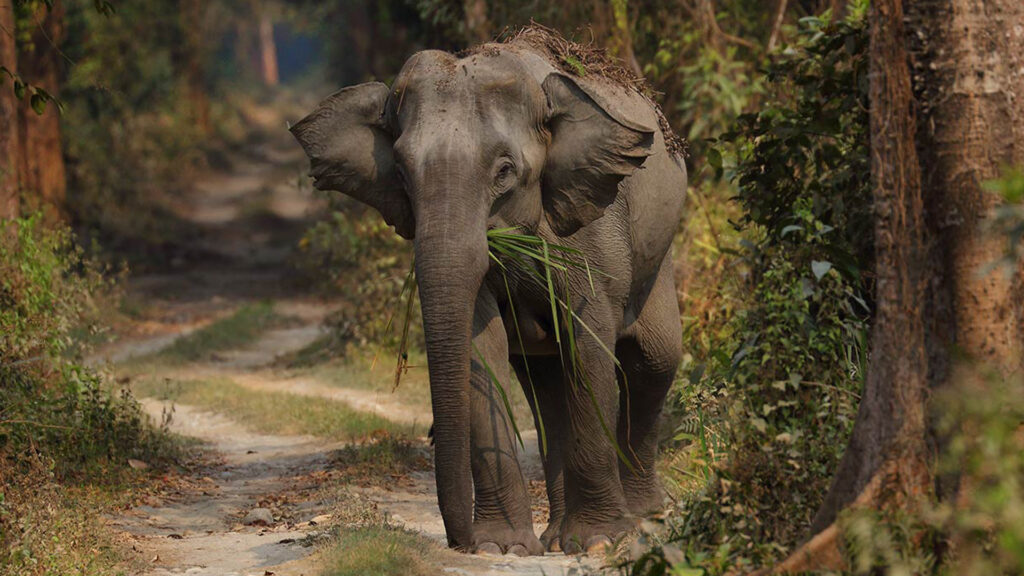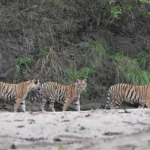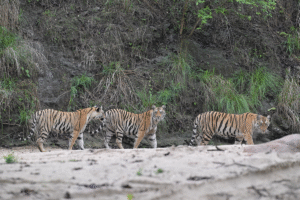Why Manas Tiger Reserve Is Assam’s Hidden Wildlife Gem
Megha

One of India’s best-kept secrets is the Manas Tiger Reserve, which is nestled in the Eastern Himalayan foothills. The majority of wildlife lovers congregate in Kaziranga, but those who travel a bit further to Manas are rewarded with unspoiled wildness, abundant species, and a very intimate experience. Manas National Park, which is situated in Assam along the Indo-Bhutan border, is one of India’s most important biological assets. It is not just a tiger reserve; it is also a biosphere reserve and a UNESCO World Heritage Site.
Where is Manas National Park Located?
The Manas national park is located in western Assam, along the Indo-Bhutan border. It lies in the border between India and Bhutan. This region encompasses the Manas River, a lifeline for the region. We can say it as a transition zone between the plains and mountains. Manas biosphere reserve is a part of the Manas Biosphere Reserve and a UNESCO World Heritage Site. This tiger reserve in Assam has the nearest city of Barpeta Road (22 km) and Guwahati which is about 140 km away.
What Makes Manas a Unique Tiger Reserve?
Manas National Park’s remarkable ecological diversity is what really makes it unique. The park, which spans more than 950 square kilometers, is home to a unique combination of riverine ecosystems, grasslands, and tropical evergreen forests. It is home to some of the world’s most endangered species, such as the Assam roofed turtle, golden langur, pygmy hog, and hispid hare. Manas is a prominent tiger reserve in Assam, and its strong Bengal tiger population is undoubtedly its pride.
But Manas Wildlife Sanctuary isn’t as congested as other Indian national parks. Animals can roam freely and unhindered due to the area’s tranquil scenery and little tourist traffic. Because of this exclusivity, seeing wildlife here is a unique opportunity.
Wildlife and Birdwatching in Manas
The wild speaks – not in words, but in footprints and rustling!
The park is home to wild elephants, gaurs, leopards, swamp deer, and wild water buffalo in addition to the elusive tigers. The world’s greatest population of wild water buffalo is actually found in Manas Wildlife Sanctuary. This park is an absolute haven for birdwatchers. The area is home to more than 450 different species of birds, such as Bengal florican, wreathed hornbill, and great hornbill. It’s the type of location where there is a chance to see something uncommon and magnificent around every bend in the river and jungle trail.
We will say that the birdwatching in Manas is a rewarding experience in the Assam wildlife tours. There are over 450 bird species and 55+ mammal species comprising the flora and fauna in Manas. Here’s to note that the best time for birding is from November to April and is considered as the dry season where the migratory birds arrive.
Safari Experience in Manas National Park
A part of your soul will remain unawakened!
In India, going on a jungle safari is the finest way to see the outdoors, and Manas National Park provides one of the most genuine experiences. Elephant rides and Jeep safaris are two options available to visitors, each providing a different viewpoint of the park’s many ecosystems. While evening safaris allow you to enjoy the sunset over the expansive plains, mornings are ideal for seeing big animals and grazing herbivores. Safaris here feel more intimate than in more marketed parks, enabling you to establish a genuine connection with the natural world.
Jeep Safari
Explore the most popular and effective way of visiting diverse wildlife with jungle safari in India. Mostly the safari in Assam are organized by the forest departments or by the resorts.
- Available in core and buffer zones
- Popular entry points: Bansbari and Bhuyanpara
- Morning and evening rides available
Elephant Safari
Here’s an intimate way to explore dense forest patches by riding on the trained elephants. You will get only limited access as part of the Manas tour packages, whereas you can spot elusive species like tiger, rhino and elephant herds.
River Rafting
There is a unique offering available in the Manas national park where you can try jungle Safari on the Manas River. This is the best itinerary for spotting water birds and crocodiles. It is suitable for beginners, families and nature lovers.
Best Time to Visit Manas Tiger Reserve
The Best time to plan your Manas Tour Packages is between November and April when the weather is pleasant and the park remains open for safaris. Monsoon months, from May to September, see heavy rainfall, making the forest trails difficult to navigate. Winters are especially delightful, with misty mornings and crisp, cool evenings.
What’s Included Manas Tour Packages:
The Manas tour package provides a combination of services and experiences for a seamless wildlife adventure. You can stay in the resorts and homestay as per your standards of luxury with options like single, double or family accommodations. We also provide stays like 1N/2D, 2N/3D, and customized Assam wildlife tours as a part of Manas national park tour package.
To enjoy the jungle safari in India to the fullest, you need to have the best stay that holds a cultural adventure. The Manas tour packages also include jeep safari, guide, meals and accommodation for family and couple. People can take group tours, family-friendly packages and photography-focused itineraries that are available.
How to Reach Manas National Park
Located in the state of Assam, which involves the combination of air, rail and road travel depending upon the source of start. If you confused on how to reach Manas national park to enjoy the safari in Assam, here are the following:
- By Air: Nearest airport is Guwahati (140 km) – Travel time is about 4-5 hours by road. Some resorts also offer airport pickup as part of the Manas tour package.
- By Rail: Barpeta Road station is the closest (22 km)
- By Road: From Guwahati, drive via NH27 to Barpeta Road and Bansbari
Out tip to you: Hire local taxis or ask your resort to arrange pickup/drop-off. The main entrance to Manas national park is the Bansbari gate neat the Barpeta road town.
Travel Tips for Manas Safari
A practical and easy way to enjoy your Manas safari journey is doing the right package. You have to ensure about the clothing, footwear, accessories, gadgets, booking for safari, following the safari etiquettes, safety and health, and cultural sensitivity. The following are some of the key pointers to note:
- Carry: Binoculars, cotton clothes, sunscreen, hats
- Book safari permits in advance (especially in peak season)
- Follow forest rules: No loud music, no littering, no getting off safari vehicles
- Always take a certified naturalist guide for safe and insightful experience
Conclusion
Manas Tiger Reserve is the place to go if you’re looking for an unusual, heart-pounding animal experience. It is a genuine gem among India’s national parks because of its unparalleled biodiversity, serene surroundings, and genuine safari experiences.
One thing is certain, whether you choose to stay in a resort or book a hotel in Manas National Park: you will depart with priceless memories of Assam’s undiscovered wild heart
FAQs
1. Which state is Manas Tiger Reserve located in?
Manas Tiger Reserve is located in the state of Assam, India.
2. What is the first Tiger Reserve in Assam?
The first tiger reserve in Assam is Manas Tiger Reserve, established in 1973
3. What is Manas in Assam famous for?
Manas is famous for its tigers, wildlife, and natural beauty. It is a UNESCO World Heritage Site, a Project Tiger Reserve, an elephant reserve, and a biosphere reserve.
4. What is Manas National Park also known as?
It is also known as Manas Wildlife Sanctuary.
5. What is the tiger population in Manas Tiger Reserve?
As of the latest reports, Manas Tiger Reserve has around 40 to 50 tigers, but the number may change with new surveys.






